Most of the people don’t know more about drinking champagne than it’s a bubbly, glamorous and expensive drink. Undoubtedly, champagne is one of the most elegant beverage, and it became associated with royalty and nobility from the 17th century. The secret of champagne lies in the bubbles. People open a bottle of champagne on special occasions, such as birthday, anniversary or New Year’s Eve, although the French think a little differently, considering that even an average Friday can be an excellent time for drinking champagne. The concept of champagne breakfast also originates from the French royal court, so there is nothing to be surprised. They celebrate not only the new year but also the beginning of a new day with champagne in the French style.
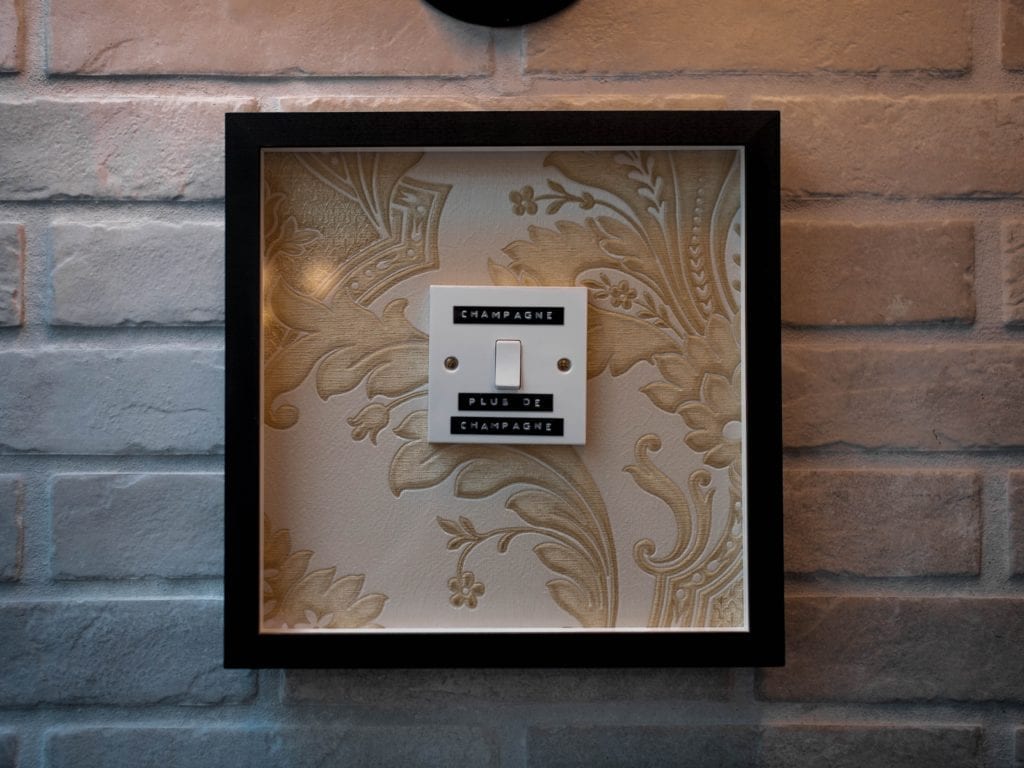
In clubs, there are champagne rooms, and many of us feel sexier after a few glasses of bubbly. Remember, we sell champagne but not need to drink it. Drink modestly and focus on your hustle. Don’t forget, alcohol doesn’t give you anything extra that you don’t have already; it only gives you the confidence to bring it to the surface.
When you have a well-educated customer who seems to know everything about champagne, make him believe that you are an expert on the product you want to sell. You can easily get the basic knowledge about champagne.
1. Champagne is a wine
There are sparkling wines and still varieties. Champagne – just like wine – is made from fermented grapes, they use the same process for cultivating grapes for champagne then for still wines. There are only three grapes variety have been used to produce champagne, these are the traditional champagne grapes like Chardonnay, Pinot Noir and Pinot Meunier. The champagne labelled Blanc de Blancs is made from white grapes, usually Chardonnay. Blanc de Noirs made of 100 per cent Pinot Noir. This is a grape variety with darker skin and white flesh.
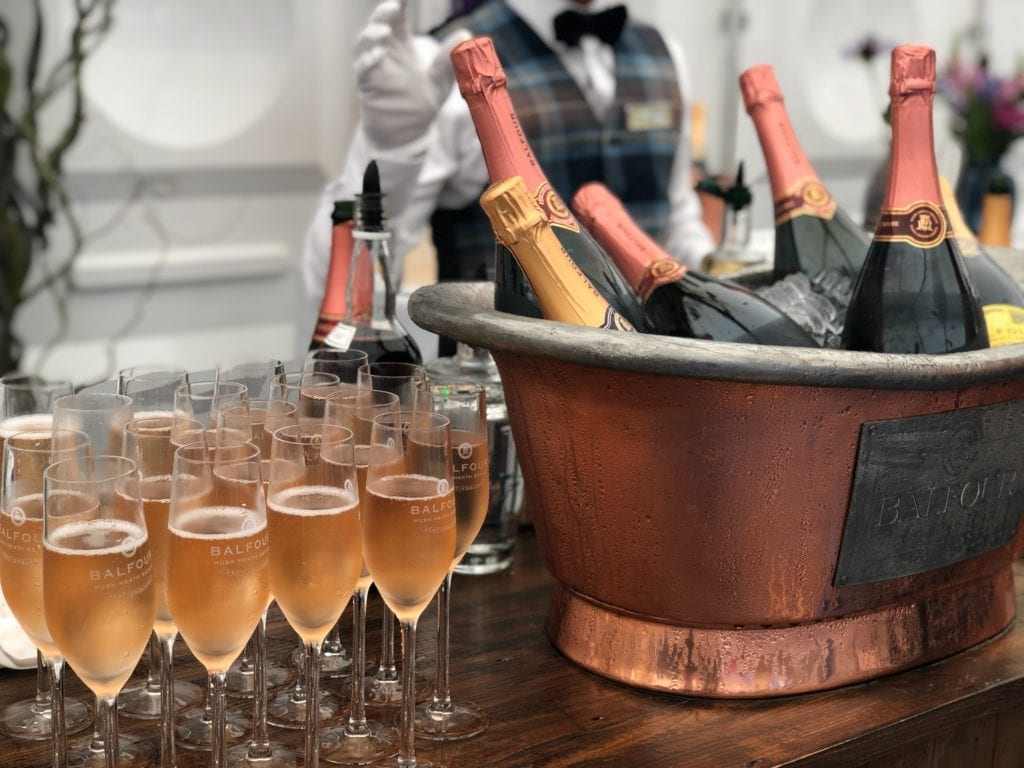
2. It’s not champagne if it’s not from Champagne
The less experts call any beverage with carbon dioxide champagne. Many people use it as a collective term for sparkling wine, but it’s against the law to label sparkling wine from Spain or Italy as champagne. Only sparkling wine that is made in the northeast Champagne region of France under the rules of the appellation is allowed to be called champagne.
UNESCO recognises the Champagne region. Actually, champagne doesn’t need to mention AOC status on the label because the fact itself that it’s called champagne already let us know the protected designation of origin.
Every wine with high levels of carbon dioxide is called sparkling wine. Every champagne is a sparkling wine, but not all sparkling wine is champagne.
Crémant is the French sparkling wine made with the same technique as champagne but from outside the official Champagne region.
The Spanish sparkling wine is known as Cava. It can be white (blanco) or rosé (rosado).
Prosecco is an Italian sparkling wine. Prosecco can be spumante, frizzante, or tranquillo, regarding to its fizziness.
Sekt is the German sparkling wine.
3. Who was Dom Perignon?
According to the legend, champagne was invented three hundred years ago by Benedictine monks in the Champagne region of France. A cellar master named Dom Perignon hid his most excellent wines, and then, he forgot them. Years later, when he found and opened the bottles, he noticed that his wines that contained residual sugar had started to ferment again. As the yeast ate the sugar, the carbon dioxide was absorbed by the wine to create carbonation. His famous quote is “Come quickly. I’m drinking the stars!” He liked it so much that after a while, he was deliberately trying to create the phenomenon. He bottled new and not yet fully fermented wines in the spring and sealed the bottles with a cork stopper, so the fermentation of the remaining sugar in the wine was completed in the bottle.
There are many legends around the birth of champagne. Indeed, the Champagne region has a cold climate, and on winter, the low temperatures often stopped the fermentation process, and the yeast didn’t finish eating up all the sugar. In the springtime, when the weather warmed up, the fermentation started again, and this spontaneous ‘second fermentation’ created the bubbles.
4. Champagne has different levels of sweetness
These French words on the label widely used to describe the level of sweetness of the champagne:
Brut Nature: It’s bone dry.
Extra-Brut: This is a very dry type of champagne.
Brut: From very dry to dry. Most Champagne is labelled as Brut.
Extra Dry: Medium dry with a hint of sweetness.
Demi-sec: It’s not sugary sweet, although they are sweeter than Brut.
Doux: This is sweet champagne.
5. How to serve champagne?
The basic rule of the champagne protocol is that the champagne should not pop while opening the bottle. Don’t allow the cork to pop loudly! Remove the foil and the wire, open the champagne bottle by holding the cork and gently twist the bottle (not the cork). If you pull the cork out, it can fly out of the bottle at speed – mind the mirrors – and the champagne would be spilt out. Don’t do that unless you want to waste champagne and drink less.
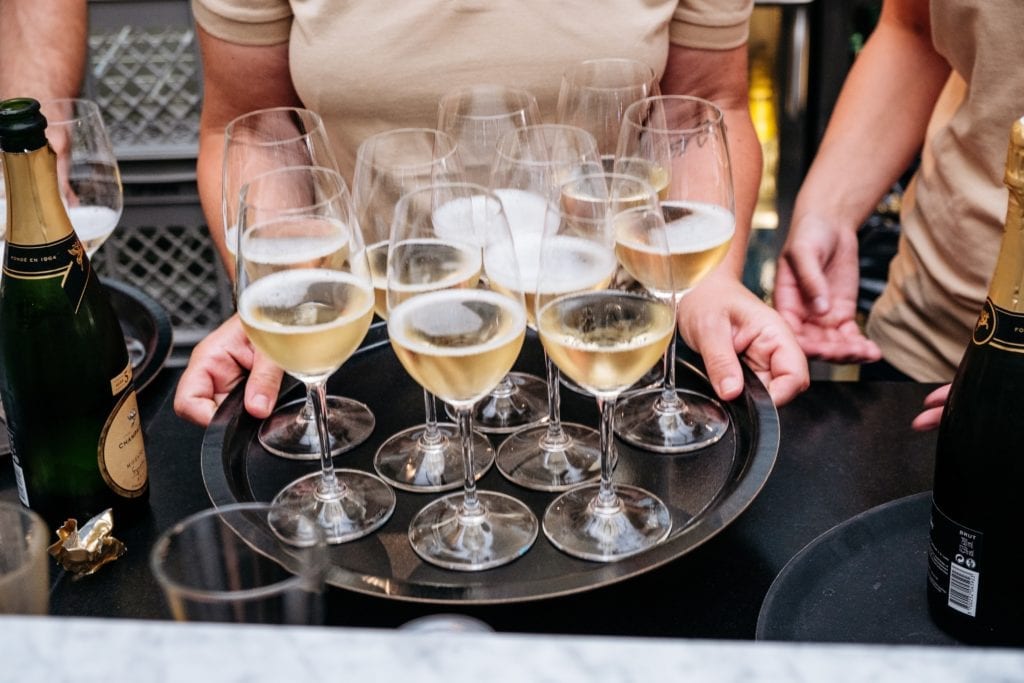
Champagne is always served chilled, at the temperature 7 to 9 °C. Using an ice-bucket filled with water and ice, you can cool a bottle to the right temperature in half an hour before opening. Also very useful when you want to get rid of the champagne.
Champagne and sparkling wine should be served in a flute, a glass with a long stem and a tall, narrow bowl. The purpose of the shape of the flute is to reduce the surface area, which makes the bubbles dissipate more quickly. Surprise your client to tell him the legend that the Victorian coupe (the saucer-shaped glass) was designed after the breast of Madame de Pompadour, mistress of King Louis XV of France. By another opinion, Marie Antoinette’s left breast won that glory.
6. Is champagne an aphrodisiac?
Every kind of alcohol is an aphrodisiac at some point as alcohol lowers self-consciousness and sedates the central nervous system. The alcohol in champagne and carbonated drinks is absorbed faster to the bloodstream than in still wine.
Champagne is a luxury product and a symbol of celebration that makes it one of the world’s most sophisticated aphrodisiacs. If you think about wealthy people and movie stars always drinking champagne at parties, it’s easy to understand it. Champagne often appears in James Bond movies, and it was also the sex symbol Marilyn Monroe’s favourite drink.
Science has proven that sparkling wines contain the same antioxidants as red wines and research has shown that those tiny bubbles help brain function. According to the latest research, the scents of dry champagnes and sparkling wines replicate the delicate aromas of female pheromones.
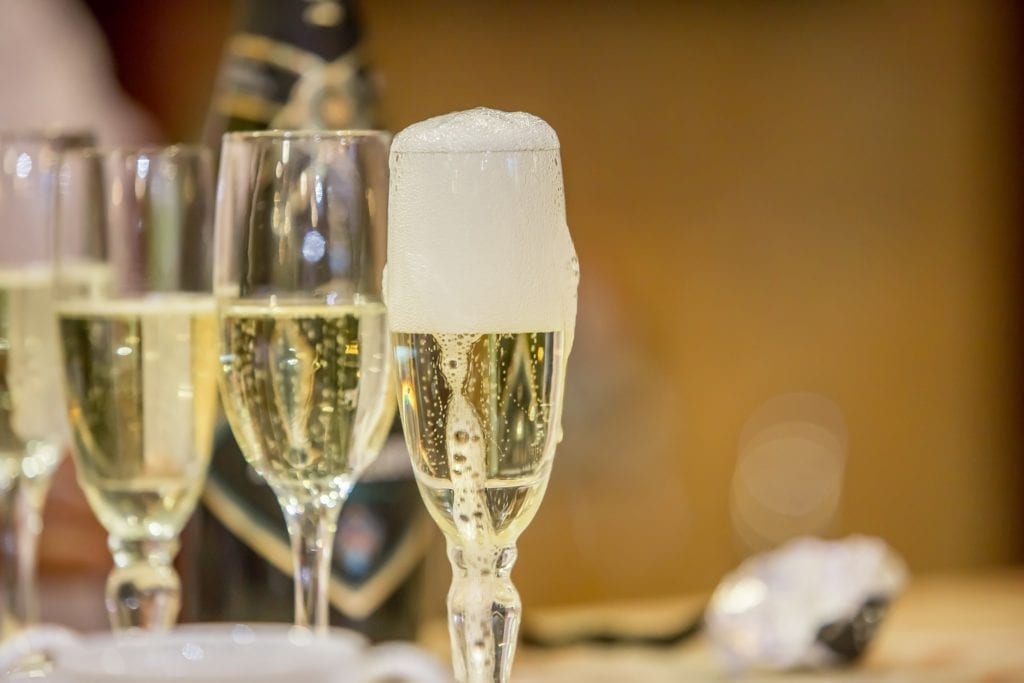
7. Adding ice cubes
Some customers look terrified as we put ice cubes to our champagne glasses. Tell them you drink ‘Piscine’ (‘piscine’ means ‘swimming pool’ in French), and if he looks suspicious, you can explain that the Piper-Heidsieck champagne house created it. And if it’s okay to pour loads of expensive Piper-Heidsieck Cuvée-Brut over ice, it’s okay putting ice cubes to your medium-priced champagne too. They don’t need to know that you need an extra-large, specially designed glass to drink ‘Piscine’. This drink is fashionable in Paris and other international cities, especially on a hot summer day.
Moet Ice Impérial is also created to be enjoyed over ice and add some berries. The sweet taste of fruits compliments the sweetness of the champagne. Many people like to put some strawberries in their champagne for the same reason.
Drinking Mimosas (a champagne cocktail with orange juice) is also an elegant way not to get so wasted on alcohol.
8. Difference between vintage and non-vintage Champagne
Vintage champagne is not necessarily old. It only means it’s made from grapes from one single year’s harvest. Non-vintage champagne is a blend of harvests from different years. If you don’t see a year displayed on the label, then it’s a non-vintage.
And the reason why vintage champagne more expensive is that because they produce less of it. The production of vintage champagne is limited, champagne houses make vintage champagne less than 5 per cent of total champagne production, only in the best years. Vintage champagne needs a minimum of three years ageing, while non-vintages needs only 15 months.
9. Why is rosé champagne more expensive?
Rosé wines are produced by crushing black grapes and leaving the juice to macerate on their skins for a short time to extract the pigments. Rosé champagne is one of the few wines that allow blending base white and red wine from the appellation; they add a small amount of red wine – usually Pinot Noir from the small village of Bouzy – during the process. Rosé champagne is often more expensive than white champagne because producing it takes more laboratory work and time-consuming.

If your customer complains that the rosé you chose is more costly, you always can chirp into his ears: Rosé champagne is much sweeter and girls like the pinkish hue.
10. How to pronounce champagne names
While the name Cristal doesn’t give us a headache, there are some champagne names that not easy to pronounce correctly – unless you have some knowledge of French. If you have a sophisticated customer who knows about champagne, it’s good to know the right pronunciation.
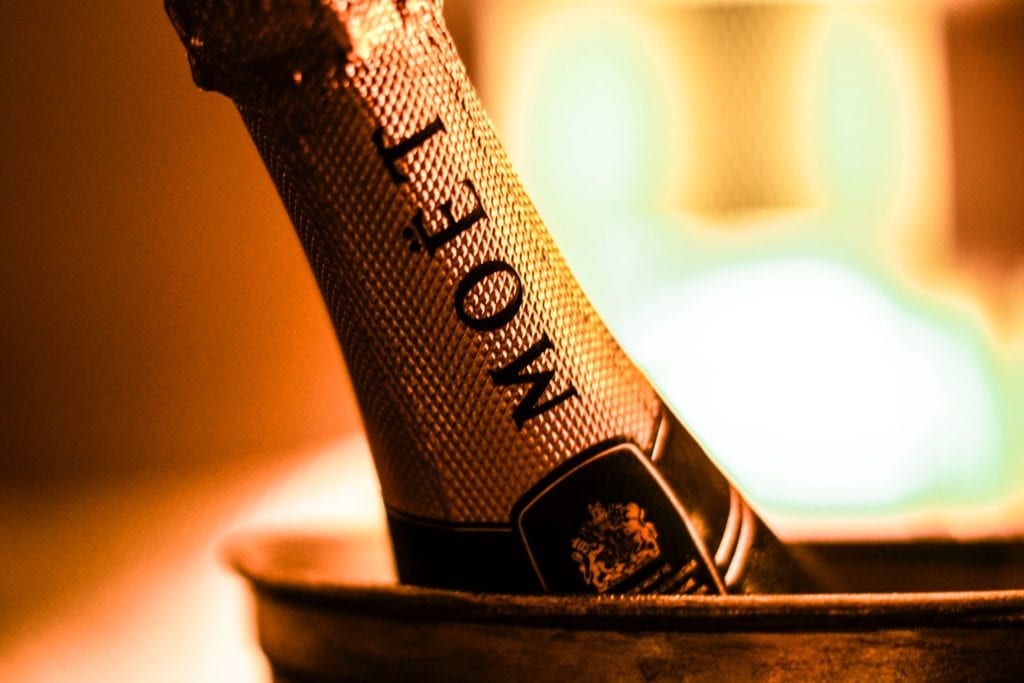
The most important champagne names that often appear on the menu:
Moet & Chandon Mo-ette and Shan-don
Perrier Jouet Pear-ee-ay Zhoo-ette
Bollinger Ball-in-jer
Tattinger Tat-in-jer
Roederer Row-der-er
Veuve Clicquot Vouv clee-co
Laurent Perrier La-ront Pear-ee-ay
Nicolas Feuillatte Nee-co-las Foy-yat
Gosset Go-say
Krug Crewg
Deutz Dootz
Mumm Mum (well, that’s pretty easy)
Pommery Pom-er-ay
Armand de Brignac Arman de Bree-nyak
Ruinart Ruee-nahr (not ‘ruin art’)
Cheers!

